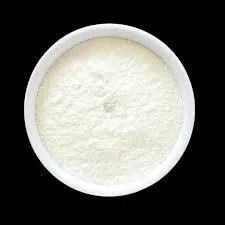
Nov . 27, 2024 06:52 Back to list
Exploring the Applications and Benefits of Hydroxypropyl Methylcellulose in Various Industries
Hydroxypropyl Methylcellulose (HPMC) An Overview of Its Properties and Applications
Hydroxypropyl methylcellulose (HPMC) is a versatile and widely used cellulose derivative that finds applications across numerous industries, including pharmaceuticals, food, cosmetics, and construction. This polymer is synthesized from naturally occurring cellulose, a biopolymer derived from plant sources. By chemically modifying cellulose, HPMC exhibits a variety of beneficial properties that make it an indispensable component in many formulations.
Chemical Structure and Properties
HPMC is a non-ionic, water-soluble polymer characterized by its hydroxypropyl and methyl substituent groups. The degree of substitution impacts its solubility, viscosity, and other functional properties. Typically, HPMC comes in various grades, which cater to specific application requirements. For instance, differences in the methoxy and hydroxypropyl content can adjust the viscosity of HPMC in solution, allowing manufacturers to select the appropriate grade for their needs.
One of the most notable features of HPMC is its ability to form clear, viscous solutions in water, making it an excellent thickening agent. Furthermore, it exhibits excellent film-forming properties, which aid in creating protective coatings for various products. Its thermal stability allows for extended usage in heat-sensitive formulations, and its non-toxic nature makes it safe for use in food and pharmaceutical applications.
Pharmaceutical Applications
In the pharmaceutical industry, HPMC plays a crucial role as an excipient in drug formulations. It serves multiple functions, including acting as a thickener, binder, and stabilizer. HPMC is commonly used in the manufacture of tablets, capsules, and suspensions. Its ability to control the release of active pharmaceutical ingredients (APIs) makes it a favored choice for sustained-release dosage forms. By modifying the concentration and grade of HPMC, formulators can develop drug delivery systems that ensure prolonged therapeutic effects, thereby improving patient compliance.
In addition to solid dosage forms, HPMC is employed in ophthalmic preparations and topical applications due to its superior moisture-retaining properties. Its biocompatibility and inertness make it suitable for sensitive formulations, contributing to enhanced comfort and effectiveness in applications.
Food Industry Applications
hydroxypropyl methylcellulose hpmc

The food industry utilizes HPMC primarily as a thickening agent, emulsifier, and stabilizer. It is a common ingredient in various formulations, including sauces, dressings, ice creams, and baked goods. HPMC helps improve texture, viscosity, and shelf life, making it a vital component in many processed foods.
One of the advantages of HPMC is its ability to retain moisture, which enhances the mouthfeel and prevents drying in baked products. In gluten-free formulations, HPMC helps to mimic the textural properties of gluten, improving the sensory quality of the final product. Additionally, HPMC is often used in low-fat formulations to provide creaminess without the added calories of fat.
Cosmetic and Personal Care Products
In the cosmetics industry, HPMC is valued for its thickening, film-forming, and stabilizing properties. It is found in a wide range of personal care products, including lotions, creams, shampoos, and conditioners. HPMC contributes to the smooth, elegant feel of formulations and enhances their spreadability on the skin or hair.
Moreover, HPMC serves as a suspending agent for pigment and other solid particles in cosmetic formulations, preventing separation and ensuring uniform texture. Its water retention capability also aids in moisturizing products, contributing to skin hydration and overall health.
Construction Industry Applications
In the construction sector, HPMC is utilized as a key additive in cement-based products, such as tile adhesives and plaster. It enhances the workability, adjustment time, and adhesion properties of these materials. Furthermore, HPMC helps to retain water during the curing process, which is essential for achieving optimal strength and durability in construction applications.
Conclusion
Hydroxypropyl methylcellulose is a multifaceted polymer with a broad range of applications across various industries. Its unique combination of properties—such as solubility, thickening ability, and film-forming characteristics—make it an essential ingredient in pharmaceutical, food, cosmetic, and construction formulations. As research continues to explore the potential uses and benefits of HPMC, its relevance in modern products and technologies is likely to grow, affirming its status as a valuable component in everyday applications.
-
HPMC for Tile Adhesive: Superior Bonding & Workability
NewsAug.30,2025
-
Premium Cellulose Ether: Effective Liquid Thickener Solutions
NewsAug.29,2025
-
HPMC for Tile Adhesive: Enhanced Bonding & Workability
NewsAug.28,2025
-
tile-bonding-additives-for-stronger-bonds
NewsAug.22,2025
-
construction-grade-rdp-for-wholesale-needs
NewsAug.22,2025
-
trusted-hec-supplier
NewsAug.22,2025







